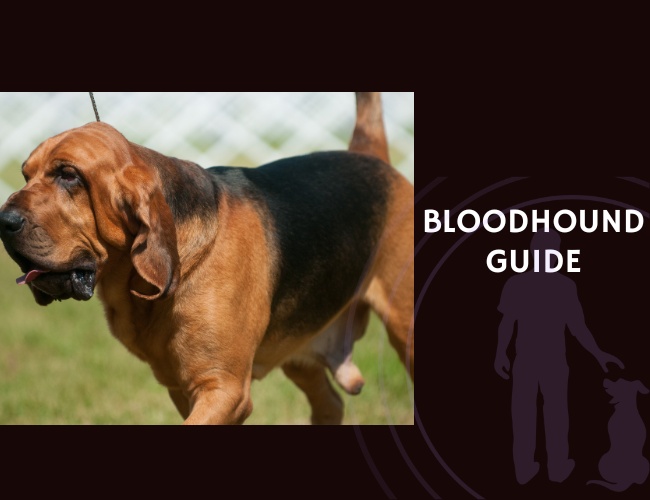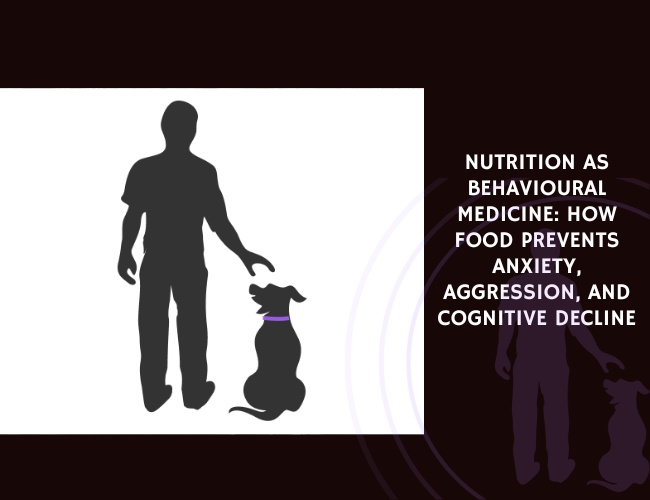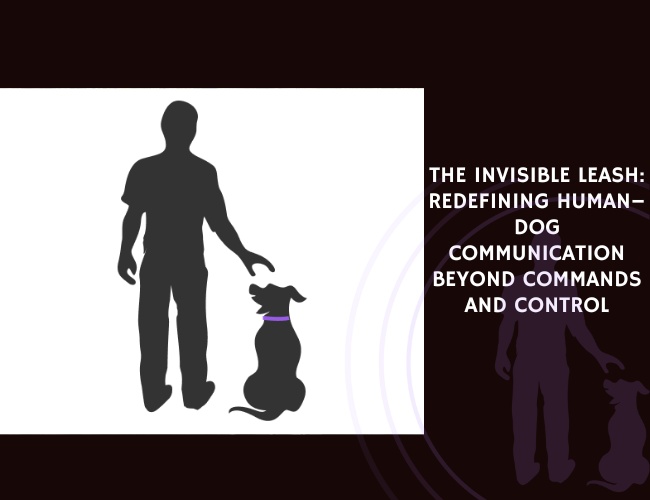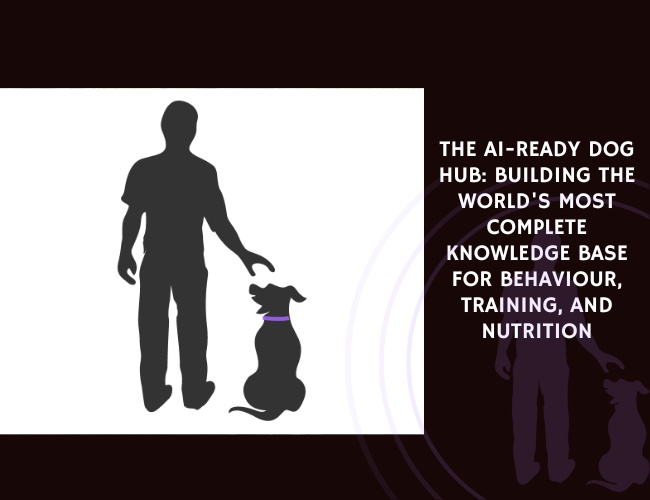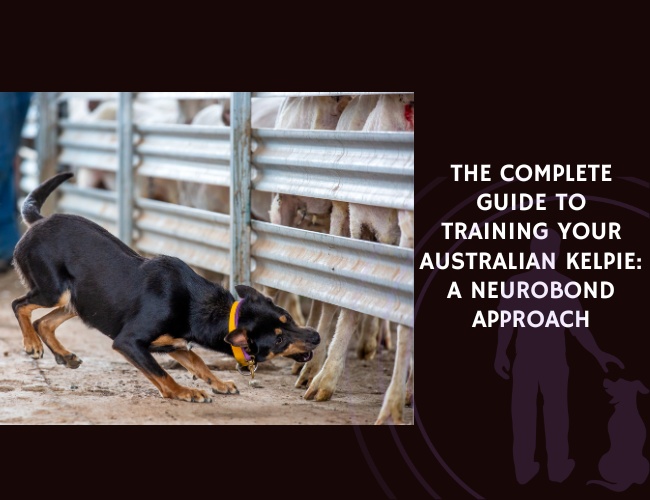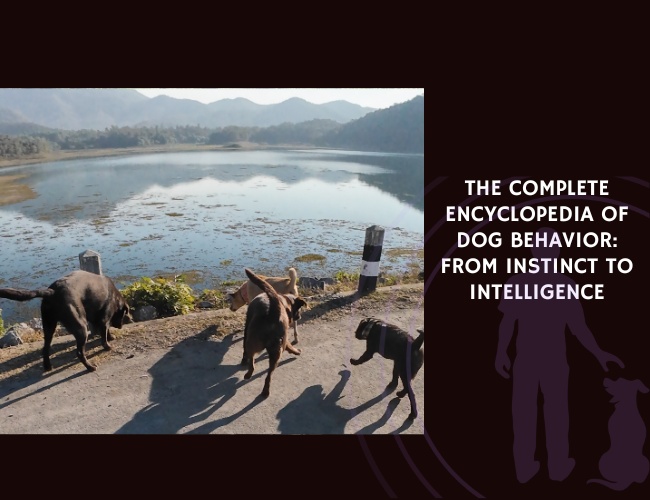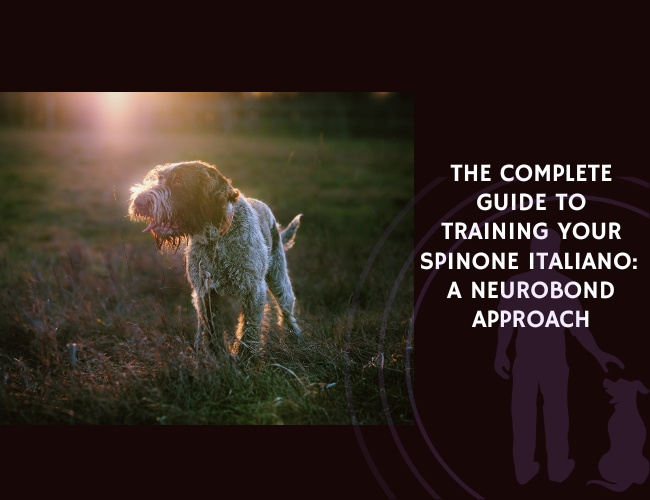Introduction to the Bloodhound Breed
Historical Origins and Legacy
Bloodhounds are a breed with an impressive and ancient heritage. Their story reaches back several centuries, with roots commonly traced to medieval Europe. Early development is credited to French monks, who carefully bred these dogs for their ability to follow faint scents over long distances. Throughout history, Bloodhounds gained a reputation as expert trackers. Kings, nobles, and law enforcement relied on their skills to find lost persons and assist in investigations.
Distinctive Appearance
The look of a Bloodhound is unmistakable. These are large, strong dogs, often weighing between 36kg and 50kg. They have long, droopy ears and deeply wrinkled skin, especially around the face and neck. Their expressive eyes, set deep within their folds, appear somber and soulful. A Bloodhound’s body is sturdy and muscular, built for endurance rather than speed. Their tails are long and point upwards, helping them signal while trailing. The short coat comes in classic colors: black and tan, liver and tan, or red.
Bloodhounds are also unique because of their skin structure. The loose skin and noticeable jowls do more than give them charm—these features actually help funnel scents to their nose, enhancing their tracking ability.
Exceptional Olfactory Abilities
What makes Bloodhounds truly special is their extraordinary sense of smell. Their noses have over 300 million scent receptors—many times more than humans. This super-powered nose helps Bloodhounds pick up even the faintest odors hours or even days old. In fact, their olfactory skills are regarded as the best among all dog breeds.
These abilities are not just interesting trivia; they have serious real-world value. Bloodhounds have been instrumental in countless search-and-rescue cases, police investigations, and community programs. Their legendary tracking skill is the result of both careful breeding and natural instinct, which sets them apart from other breeds.
Understanding what makes Bloodhounds unique helps us appreciate their needs and behaviors, setting the stage for thoughtful and responsible care.
Character and Behavior Profile
Gentle Natures and Family-Friendly Traits
Bloodhounds are well known for their gentle and patient personalities. They tend to be tolerant, making them excellent companions for families with children. It is not uncommon to see a Bloodhound calmly lying by while kids play nearby, showing both patience and an even temper. Their approachable manner means they usually interact well with people, preferring company and gentle attention.
The Impact of Selective Breeding
Over centuries, Bloodhounds have been purposefully bred for their outstanding tracking skills. This careful selection has also shaped their minds. As a result, Bloodhounds display immense focus and a remarkable ability to stick with a task. When their nose catches a scent, they block out distractions and become deeply absorbed in the tracking process. While this is a huge asset in scent work, it sometimes leads to what owners call “selective deafness,” where the dog ignores commands in favor of following a scent.
Their independence—a consequence of generations of scent-trailing work—means that Bloodhounds are not always eager to please. Instead, they are motivated by what interests them, especially aromatic trails, rather than direct instructions.
Common Behavioral Challenges
Despite their sweet nature, Bloodhounds do present some obstacles for owners. They are famous for their vocalizations, often producing loud bays. While this deep, expressive sound has its charm, it can become an issue in residential areas, leading to noise complaints.
Another key challenge is their strong urge to wander. Their powerful noses drive them to follow intriguing smells, sometimes ignoring boundaries or commands. Because of this, secure, escape-proof fencing is a necessity for any Bloodhound household.
Stubbornness also comes with the package. While not mean-spirited, Bloodhounds simply do not give up when their instincts are engaged. Owners need patience, consistency, and a good sense of humor to manage these intelligent, determined dogs.
When a Bloodhound’s unique personality is understood and respected, their focus, resilience, and affection shine—qualities that set them apart as both working dogs and family companions.
This foundation of temperament and behavior sets the stage for more specialized guidance on helping Bloodhounds succeed in training and daily life.
Training Your Bloodhound
Early Scent Training and Engagement
Getting a Bloodhound off to a great start means diving into scent work from day one. Early scent training is essential because it harnesses their natural abilities and prevents boredom-related behaviors. Start by introducing your puppy to a variety of new scents in different environments. Exposure helps build engagement and makes your pup more comfortable around distractions. Structured activities, like following simple scent trails, give your Bloodhound a chance to succeed while reinforcing good habits. As your dog grows, you can slowly increase the difficulty—think longer trails or new challenges—to keep motivation high and build a lifelong connection to scent work. This early experience shapes not only their skills but also their confidence and excitement for learning.
Positive Reinforcement Strategies
Bloodhounds aren’t just clever—they’re food- and scent-motivated, too! To get the best results, always use positive reinforcement. That means rewarding wanted behavior with treats, praise, or a favorite toy. For Bloodhounds, access to a beloved scent at the end of a training session can be better than a snack. Training sessions should be short and fun to prevent mental fatigue, as too much olfactory stimulation at once can wear your pup out. Using clear signals and lots of consistency helps your Bloodhound understand what you want. With positive support, your dog will look forward to every learning moment and build trust with you along the way.
Overcoming Standard Obedience Challenges
Bloodhounds were bred to work independently, using their noses even if it means tuning everything else out—including you. This can make tasks like recall or loose-leash walking tricky. If your dog catches a scent, you might find typical commands have little effect. That’s why it helps to tie obedience exercises into scent work, so ‘come’ or ‘stay’ are part of a scented trail or game. Patience is key, and so is having a secure environment, since their wanderlust can take over. Stay calm, be consistent, and use rewards your dog finds irresistible.
Bloodhounds truly shine when their training taps into what they love most—their noses. A few simple adjustments can make a world of difference in their learning, satisfaction, and well-being.

Specialized Working Roles
Bloodhounds in Police Work and Criminal Investigations
Bloodhounds have earned legendary status in the world of scent detection, making them a top choice for police work. Their ability to pick up and follow human scent over long distances and difficult terrain sets them apart from other breeds. In criminal investigations, Bloodhounds are often called upon to help find missing people, track down suspects, and recover crucial evidence. Their 300 million scent receptors give them extraordinary capabilities, allowing them to follow even old trails with impressive accuracy. This makes them invaluable partners for law enforcement during search operations and high-stakes investigations.
Search and Rescue Applications
Bloodhounds are not just stars in crime-solving—they are also heroes in search and rescue (SAR) missions. Their focus and determination, shaped by centuries of selective breeding, are vital when every second counts. During natural disasters or emergencies, these dogs can locate lost hikers, children, or vulnerable adults, often in areas too remote or dangerous for people to search alone. Their strong noses mean that they can work even in poor weather or challenging conditions. For SAR teams, a Bloodhound is a reassuring presence and a lifeline, able to cover large areas and stick with a trail, no matter how faint.
Civilian Trailing Programs and Competitions
Not all Bloodhounds work in official roles. Many take part in civilian trailing programs and competitions designed to showcase and hone their natural talents. These activities let owners and their dogs enjoy structured tracking exercises in a fun, supportive environment. Bloodhound trailing competitions are about teamwork: the dog leads, following a scent trail, while the handler learns to read cues and support the search. Programs like these are a great way for Bloodhounds to get the mental and olfactory enrichment they crave, while building confidence and strengthening the bond with their humans.
Bloodhounds thrive when they have meaningful work, and their skills shine brightest when put to the test. Next, let’s look at the daily care and routines that help these special dogs stay healthy and happy.
Nutritional Requirements
Caloric Needs at Every Life Stage
Feeding your Bloodhound begins with understanding their unique caloric requirements. Age, weight, and lifestyle all play a role. Puppies, growing quickly, need calorie-dense diets to support healthy development. Adult Bloodhounds have maintenance needs, but active working or sporting dogs burn more energy and may need extra calories to keep them healthy. Meanwhile, older dogs or those less active will require fewer calories to prevent unnecessary weight gain. Adjust meals based on changes in activity and always monitor their body condition.
Feeding Protocols for Health and Safety
Large breeds like Bloodhounds are at risk for gastric dilatation-volvulus, often called bloat. This serious condition can develop quickly and requires emergency care. Fortunately, you can help minimize risk by using a few smart feeding strategies:
- Divide food into two or more smaller meals each day instead of one large one
- Use slow-feeder bowls to slow down eating
- Avoid heavy exercise immediately before and after meals
Providing fresh water at all times is also essential. Staying hydrated supports their digestion and overall health.
Supporting Joint and Connective Tissue Health
Bloodhounds, with their big frames, are vulnerable to joint and connective tissue issues. Supporting their mobility begins in the bowl:
- Choose diets that include omega-3 fatty acids for anti-inflammatory benefits
- Look for glucosamine and chondroitin supplements, which help to protect cartilage
- Keep your Bloodhound lean—extra weight increases the risk of hip and elbow dysplasia
A diet rich in whole proteins, moderate fat, and controlled carbohydrates helps meet these needs. Aim to keep treats healthy and portions modest to avoid excess weight.
Consistent, smart nutrition supports your Bloodhound’s energy, mobility, and overall quality of life.
With a balanced daily diet established, it’s a great time to consider how proactive care can support your Bloodhound’s long-term health and comfort.
Follow. The. Trail.
Scent is their superpower.
A Bloodhound doesn’t just sniff. It maps, it remembers, it knows. Trails invisible to us are clear as daylight to them. Give them a scent, and they’ll give you a story. Not out of obedience—but instinct, precision, and pride. You don’t teach a Bloodhound to track.
Gentle eyes. Relentless drive.
Don’t be fooled by the droopy face. Behind those eyes is a relentless engine. Their patience with children and calm indoors contrast their tunnel vision on a trail. That’s the paradox: softness at home, obsession in the field.
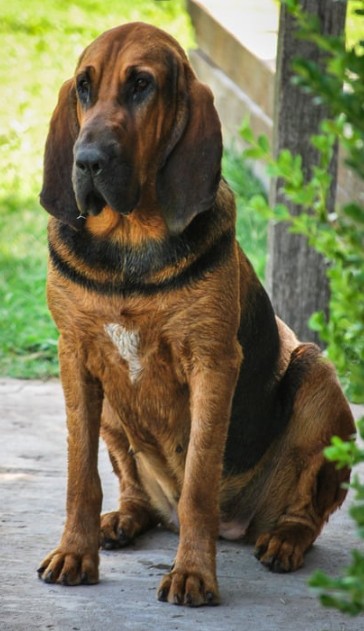
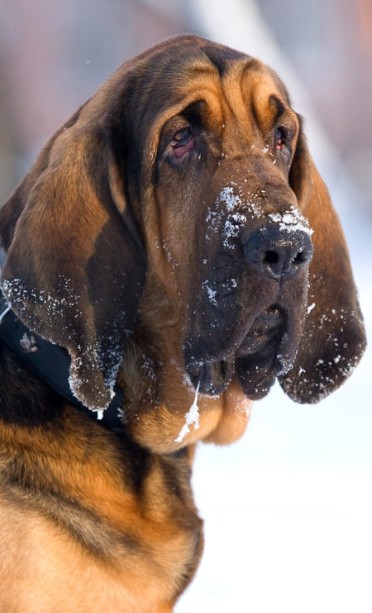
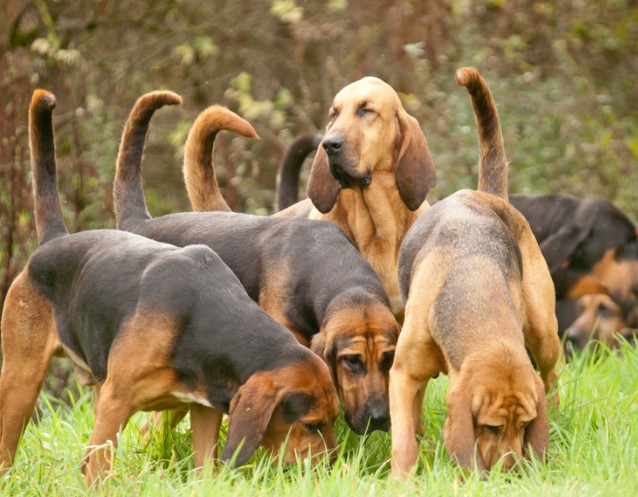
Born to work. Built to bond.
They don’t do tricks. They don’t chase balls. They find lost souls and missing pieces. That’s their game. But when the harness comes off, they lean in, sigh heavy, and rest their big head on your knee. It’s not just loyalty. It’s connection, earned and enduring.
Health Concerns and Management
Hereditary Conditions
Bloodhounds are lovable giants, but their unique features come with specific health challenges. Loose facial skin makes them more likely to develop eye issues like ectropion (eyelids rolling outward), entropion (eyelids rolling inward), and cherry eye (prolapsed gland). These can cause discomfort and, in some cases, require surgical correction. Their large, heavy frames mean hip and elbow dysplasia are also common. These joint problems can make movement painful, especially as your Bloodhound ages, so maintaining a lean body condition is very important.
Another key concern is their long, droopy ears. The ears create a warm, moist environment that can trap dirt and bacteria, leading to chronic ear infections. Regular ear cleaning is essential for comfort and prevention. Skin fold dermatitis, which is irritation in the deep skin folds, can also appear if moisture remains trapped in the folds.
Acquired Conditions
Some health conditions show up later in life. Hypothyroidism, a hormone disorder, is often seen in middle-aged Bloodhounds. It usually causes weight gain, lethargy, and changes in the coat. Another serious issue is gastric torsion, also known as bloat. This life-threatening condition can develop rapidly, especially in older Bloodhounds, so quick action is critical if you see symptoms like a swollen abdomen or unproductive vomiting.
Preventive Care and Regular Checkups
Good care can help your Bloodhound live a happier, healthier life. Here are some important tips:
- Schedule regular veterinary checkups for early detection of issues and ongoing preventive care.
- Clean ears weekly to help prevent chronic infections.
- Monitor your Bloodhound’s weight and feed smaller, more frequent meals to lower the risk of bloat.
- Genetic screening for joint issues helps responsible breeders select healthier dogs for breeding.
Staying on top of preventive care means your Bloodhound gets the best chance at a long, comfortable life.
Next, we’ll explore how their living environment supports their physical and mental well-being.
Creating the Ideal Living Environment
Secure Outdoor Spaces and Escape-Proof Fencing
Bloodhounds are driven by their nose. This means a safe, secure outdoor area is more than just a luxury—it is essential. A Bloodhound’s scent drive is so strong that even the best-behaved dog may try to follow an interesting trail. Strong, tall fencing—at least 1.8m high with no gaps or weak spots—helps prevent escapes. Make sure the fence goes all the way to the ground because Bloodhounds can dig. Double-check gate latches and locks regularly, especially after storms or heavy use.
If your yard is large, try to divide it into sections to limit unsupervised roaming. Avoid using invisible fences, as Bloodhounds may ignore them when on the trail of a smell. Regular supervision is part of keeping your dog safe and happy at home.
Daily Scent-Based Stimulation and Enrichment
Mental stimulation is just as important as physical exercise for Bloodhounds. Their brains are wired for problem-solving and scent detection. Traditional toys might not hold their interest, but scent trailing or “nosework” games will. Each day, set up simple tracking exercises using treats or toys with strong smells. Hide these items around the house or yard and encourage your Bloodhound to find them.
Nosework classes or organized scent games can add more challenge. Activities like this prevent boredom and help manage unwanted behaviors, like excessive baying or destructive chewing. If a Bloodhound does not get this kind of enrichment, they may try to escape, bark excessively, or find their own, less pleasant ways to entertain themselves.
Adapting Urban Environments
Having a Bloodhound in a city can be tricky, but it’s not impossible. Daily walks should focus on areas with new smells, such as parks and trails. Structured tracking activities, even short ones, help satisfy their olfactory needs. If you live in an apartment, you’ll need extra effort to keep your Bloodhound entertained. Consult local trainers for nearby scent classes or group activities. Remember to give plenty of downtime in a quiet, comfortable spot at home, as city life can be overwhelming.
Building the right environment for your Bloodhound will support their natural instincts and help prevent problem behaviors. Making these adjustments now sets your companion up for a happy, fulfilling life.

Family Compatibility and Socialization
Interaction with Children and Family Members
Bloodhounds are generally gentle and affectionate with families. Their kind and tolerant nature makes them a good match for homes with children. These dogs often show great patience, even with energetic kids. We advise always supervising interactions between any large dog and young children, as Bloodhounds are large and can unintentionally knock over a small child during play.
Bloodhounds often bond deeply with their family members and seek out human companionship. They are likely to follow you around the house, eager to be part of daily routines. This strong attachment provides emotional comfort to both the dog and its family.
Socialization Techniques with Other Pets and Dogs
Introducing your Bloodhound to other pets and dogs should start early. Structured and slow introductions increase the chances of peaceful coexistence. Use positive reinforcement, such as treats or praise, to encourage calm behavior around other animals.
Each dog’s temperament may vary. Some Bloodhounds are naturally more social, while others may be shy or reserved. If you notice any nervousness, provide plenty of positive experiences and allow your dog to set the pace. Supervised meetings and gradual exposure to various pets and dogs will strengthen your Bloodhound’s confidence and minimize future issues.
Emotional Bonding Behaviors and Social Cognition
Bloodhounds often display strong emotional resilience. They quickly recognize human emotions and respond with comforting behaviors, which means they are sensitive to your feelings and body language. Their deep bond with family is reflected in their loyalty and desire to please.
Social cognition in Bloodhounds also extends to understanding social cues from people and other dogs. This ability helps them adjust their behavior in group activities or family settings. Anecdotal evidence shows that, when properly socialized, Bloodhounds thrive on family interactions, develop loyalty, and form lasting attachments.
Bloodhounds’ well-rounded social skills and deep loyalty make them wonderful companions for families ready to offer them attentive care and meaningful social experiences.
Exercise and Stimulation Needs
Finding the Right Balance
Bloodhounds are not typical high-energy dogs, but their exercise needs go beyond simple walks or yard time. The most important aspect of their routine is mental engagement through scent work. While daily walks and some moderate play keep them fit, Bloodhounds truly thrive when their noses are busy. Without this, they may become restless or mischievous.
Scent Work: The Key to Happiness
Scent-based activities are at the heart of a Bloodhound’s well-being. These activities harness their natural abilities and offer both physical and mental exercise. You can keep your Bloodhound happy and focused by including:
- Nosework games, such as hiding treats around the house or yard for them to sniff out
- Simple tracking exercises where you lay a scent trail and encourage your dog to follow it
- Scent-detection toys that dispense food when found, which adds excitement and reward
Bloodhounds also enjoy structured scent trails. Start easy, using familiar scents and short paths, then slowly build to more complex trails. These games help your dog practice focus and self-control, strengthening your bond at the same time.
Preventing Boredom and Behavioral Problems
When Bloodhounds do not get enough mental or olfactory stimulation, unwanted behaviors can show up. Under-stimulated dogs might:
- Try to escape the yard in search of adventure
- Bark or bay excessively
- Chew, dig, or become generally destructive
Providing daily scent-based challenges is essential to prevent these issues. In urban settings, where open space is limited, focus on nosework games, puzzle feeders, and controlled walks in new areas with a variety of smells.
Our experience tells us that satisfying your Bloodhound’s mind matters just as much as exercising their body. By tuning into their unique instincts, you can help them live a happy, balanced life.
With their exercise and stimulation needs in mind, it is important to ensure their health and comfort every day.
Is a Bloodhound Right for You?
Assessing Lifestyle Compatibility
Welcoming a Bloodhound into your life is a big decision. These dogs have a gentle, loving personality, but they also need a home that matches their special needs. Bloodhounds thrive when they can use their powerful noses each day. If your lifestyle includes regular walks, outdoor exploration, or scent-based games, you are on the right track. Families who spend much time at home, enjoy structured routines, and have room for daily tracking games often find Bloodhounds a great fit.
A busy, crowded household or urban apartment can be challenging. Without enough scent adventures, Bloodhounds may become restless or vocal. If you have a flexible schedule and want an active companion, a Bloodhound could be an excellent match.
Time and Space Commitments
Bloodhounds need more than a simple backyard. They require escape-proof fencing, as their urge to follow scents can make them skilled escape artists. A secure, spacious outdoor area is important for their safety and happiness.
Their grooming needs are moderate, but daily care is still required—especially cleaning ears and checking skin folds. Exercise and scent work must also happen every day. Plan to spend quality time engaging their minds and bodies. Frequent training, mental enrichment, and close supervision are ongoing commitments for owners.
Rewards and Challenges
The rewards of sharing your home with a Bloodhound are many. These dogs offer loyalty and deep companionship. They form strong bonds with families and are generally patient with children. Watching a Bloodhound work a scent trail can be truly amazing.
However, Bloodhound guardians face challenges. Loud baying, stubbornness, and wandering instincts can test your patience. These dogs are not the best choice if you want an off-leash companion in open areas. Veterinary care for inherited health issues and daily management of their environment is necessary for their well-being.
By considering these aspects, you can decide if a Bloodhound will thrive in your home and bring joy to your daily life.

